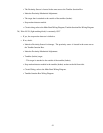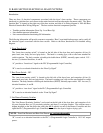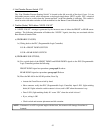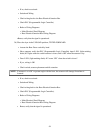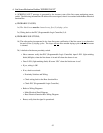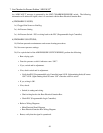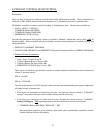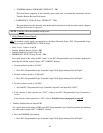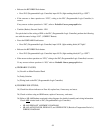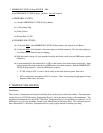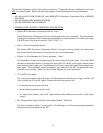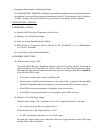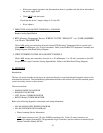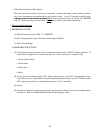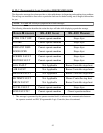
91
The following information will provide a means to respond to “Temperature Sensing” malfunctions, and verify
ALL its electrical signals. Refer to the following diagrams for detail placement and wiring information.
• ML-460 ANNUCIATOR, PENDANT, and UPPER RTD’S (Resistance Temperature Device) WIRING
DIAGRAM
• ML-460 MAIN PANEL WIRING DIAGRAM
• ML-460 SYSTEM BLOCK DIAGRAM
1. TEMPERATURE SENSING COMPONENT DESCRIPTIONS
• Exhaust RTD (Resistance Temperature Device)- Sens1
The RTD (Resistance Temperature Device), used throughout the dryer are identical. The main function
is to measure temperatures and to transfer this information to a measuring devices for further processing.
The RTD used on the dryer are rated for 1100° F (593.3° C).
• Sens1 = Exhaust Temperature Sensor
The exhaust RTD (Resistance Temperature Device) is located in the dryer burner area exhaust duct
and also has electrical disconnects in a junction box for ease of replacement.
• Exhaust 4 to 20 milliampere (4 to 20 mA) transmitter - Trans1
This transmitter is located on the upper right of the main electrical enclosure panel. The exhaust RTD
(Resistance Temperature Device) is connected in series with a 24 volt DC power supply, and the current
drawn from the power supply is 4 to 20 milliampere (4 to 20 mA) output signal which is proportional to the
input signal. The proportional current information is the connected to the PLC (Programmable Logic
Controller) for processing. Refer to the dryer Ladder Diagram for circuit information.
• 24 Volt DC Power Supply
The 24 volt power supply used in the dryer is an individual grade switching power supply, rated for 120
volts AC input and 24 volts DC output. Features this device incorporates are:
• Overload protection to protect the load
• Internal failure protection to protect itself
• An output status indicator; this L.E.D. (light emitting diode) indicates the presence of DC output
voltage.
• PLC (Programmable Logic Controller) Analog Input Module - Module #2
This device, attached to the PLC , receives the 4 to 20 milliampere (4 to 20 mA) temperature information
and processes this information for the PLC.



